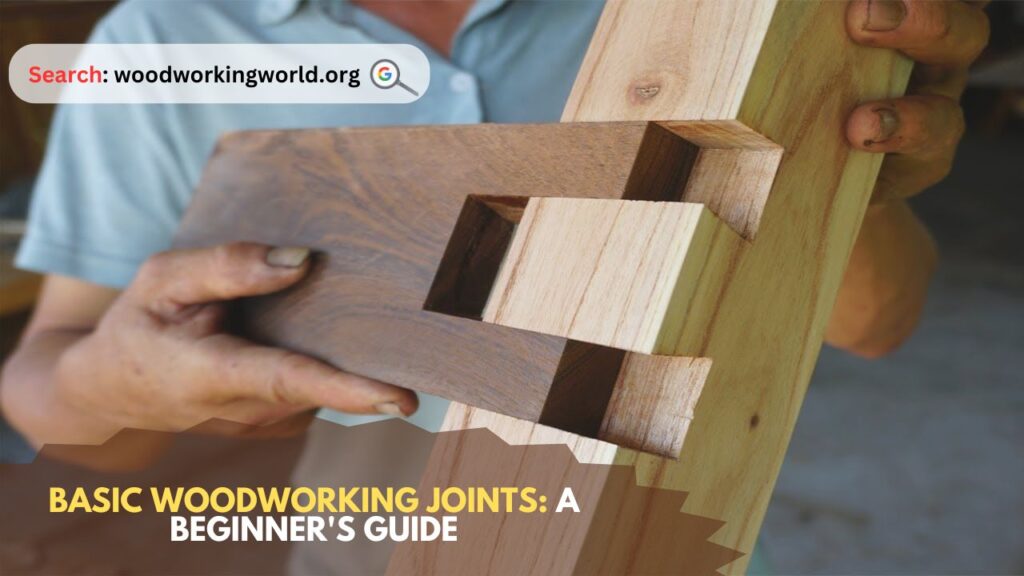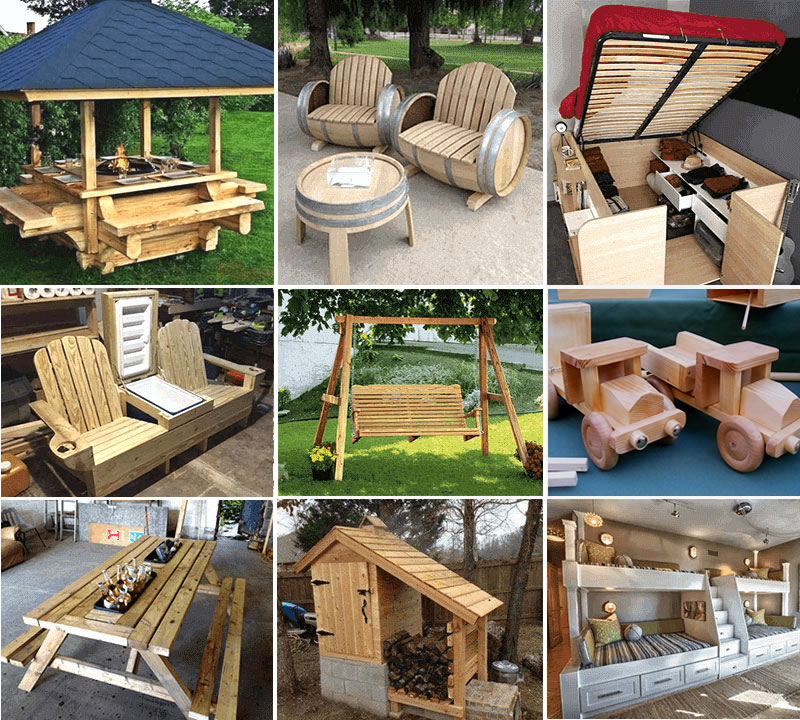Basic Woodworking Joints: A Beginner’s Guide
Starting a woodworking project? Knowing the basics is crucial, especially when it comes to woodworking joints. These connections are the foundation of any sturdy structure, ensuring your work is both functional and durable. In this article, we’ll walk you through the most common and easy-to-learn woodworking joints perfect for beginners.

👉 Click here to unlock 16,000+ DIY woodworking plans now
1. Butt Joint
Overview
The butt joint is the simplest and easiest to create. It involves joining two pieces of wood at a right angle by simply butting them together.
- Uses: Frames, lightweight structures.
- Strength: Weak unless reinforced with glue, screws, or nails.
- Best For: Quick assembly and simple projects.
2. Miter Joint
Features
A miter joint is similar to a butt joint but involves angled cuts, usually 45 degrees, to form a clean corner.
- Uses: Picture frames, decorative trims.
- Strength: Moderate; often reinforced with glue or nails.
- Appearance: Neat and professional.
3. Lap Joint
What It Is
A lap joint is made by overlapping two pieces of wood, either partially or fully.
- Types: Full lap, half-lap.
- Uses: Cabinetry, basic frames.
- Strength: Stronger than butt joints.
- Pros: Easy to cut and assemble.
Start Your Next Project With Teds’ Archive Of 16,000 Plans!
Instant access to all 16,000 woodworking plans with step-by-step details, photos, materials lists and more
Monthly free plans with lifetime membership access – No renewals, recurring fees or other charges


4. Dado Joint
Groove Simplicity
This joint is created by cutting a slot (dado) into one piece of wood to hold another.
- Uses: Shelving, cabinetry.
- Strength: Durable and stable.
- Advantages: Simple and reliable.
5. Rabbet Joint
Basic Functionality
A rabbet joint involves an L-shaped groove cut into the edge of a board to hold another piece.
- Uses: Boxes, back panels of cabinets.
- Strength: Moderate; often reinforced with glue.
- Advantages: Simple and effective.
6. Pocket Hole Joint
Modern and Handy
This joint is made by drilling an angled hole into one piece of wood and joining it to another with a screw.
- Uses: Furniture assembly, quick fixes.
- Strength: Strong with glue.
- Why It’s Popular: Easy and efficient.
7. Biscuit Joint
Precision Made Easy
A biscuit joint uses small, oval-shaped wooden pieces (biscuits) that fit into slots on two boards to connect them.
- Uses: Tabletops, panel assembly.
- Strength: Reliable and clean.
- Pros: Ideal for aligning boards.
8. Tongue and Groove Joint
Perfect Fit
This joint involves a tongue on one board fitting into a groove on another, creating a seamless connection.
- Uses: Flooring, paneling.
- Strength: Stable and strong.
- Appearance: Uniform and polished.
9. Box Joint
Square Simplicity
A box joint consists of interlocking square fingers cut into two pieces of wood.
- Uses: Storage boxes, chests.
- Strength: Durable.
- Advantages: Easy to cut with the right tools.
10. Mortise and Tenon Joint
Traditional and Strong
One of the oldest woodworking joints, it involves a tenon (projection) fitting into a mortise (hole) in another piece.
- Uses: Tables, chairs, doors.
- Strength: Extremely strong.
- Skill Level: Beginner-friendly with practice.
11. Bridle Joint
Exposed and Elegant
This joint is like a mortise and tenon but leaves the tenon exposed, making it visually appealing.
- Uses: Frames, trestle tables.
- Strength: Strong and reliable.
- Appearance: Rustic charm.
12. Scarf Joint
Length Extender
A scarf joint is used to join two pieces of wood end-to-end, creating a longer board.
- Uses: Beams, long furniture pieces.
- Strength: High with proper reinforcement.
- Advantages: Seamless length extension.
Conclusion
Understanding these basic woodworking joints is the first step toward mastering woodworking. From the simple butt joint to the classic mortise and tenon, each has its unique strengths and applications. Start with these fundamentals, and as your skills grow, you can experiment with more advanced techniques.
👉 Click here to unlock 16,000+ DIY woodworking plans now
